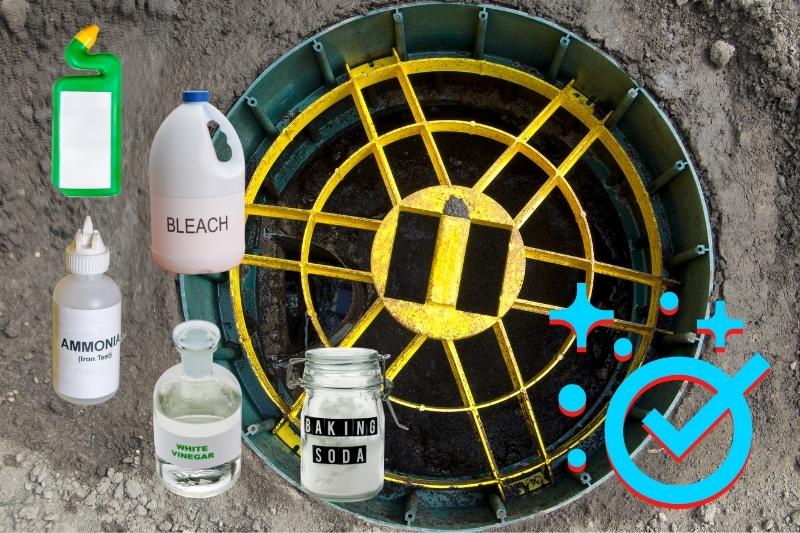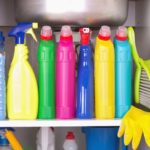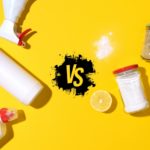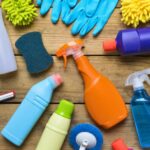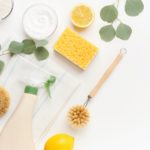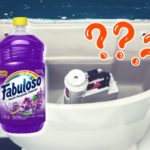Septic tanks are often the only choice for rural properties and cottages that fall outside the municipal sewage system.
The difference in how the system works means that the chemicals and materials that you wash down the drain must be septic safe, to avoid nasty or expensive problems in the future.
Why Cleaning Products Can Affect a Septic Tank
Regardless of the cleaning task at hand, it is important that you consider whether any chemicals you use will affect your septic tank.
If you introduce too many chemicals to the system, it can disrupt the tank’s chemical balance, which can have major consequences.
Many household cleaners are safe to use, however there are some chemicals that can cause damage to the septic tank itself or kill the bacteria that breaks down solids within the tank.
If the bacteria in the tank is killed, this can cause major problems, including the tank clogging up, groundwater pollution, and more.
It is natural to have concerns about what household chemicals you can use with a septic tank. Fortunately, there are a range of readily available household chemicals that can be used safely.
Regardless of how safe a chemical is, it is crucial that you only use it in moderation as overuse of any chemical can cause a problem. Many popular cleaning producst like Toilet Duck can be used with septic tanks, as long as you don’t go overboard with them.
Drain Cleaner
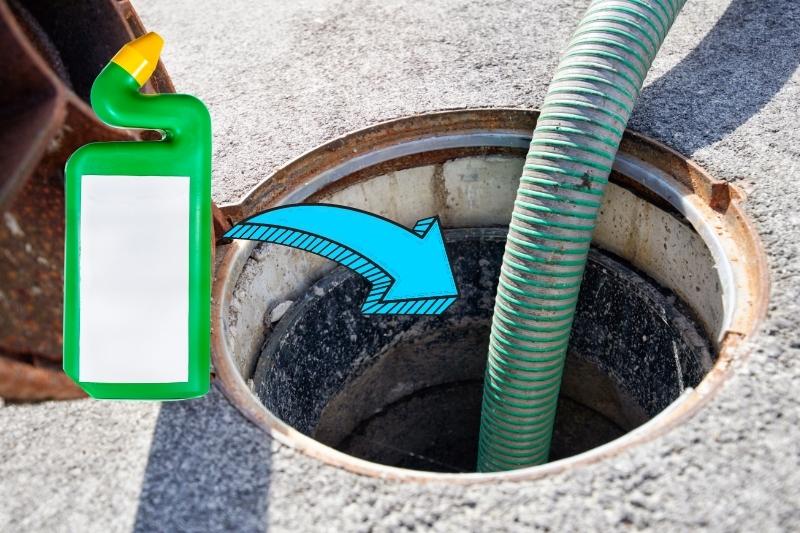
The general rule of thumb with regards to chemical drain cleaner is to check the label. Any commercially available drain cleaner should state whether it is safe for use with a septic tank, and if it doesn’t say on the label, the manufacturer should be able to confirm this for you.
Chemical drain cleaners are usually one of the strongest chemicals found in the average household, and so if used inappropriately, they can cause some serious damage.
Many liquid drain cleaners are safe to use with septic tanks, however foaming or solid drain cleaners are likely to damage the tank and so should be avoided.
If you do have a clogged waste pipe, such as a kitchen sink, try to use chemical-free solutions such as boiling water or one of the homemade solutions further on in this article.
Bleach
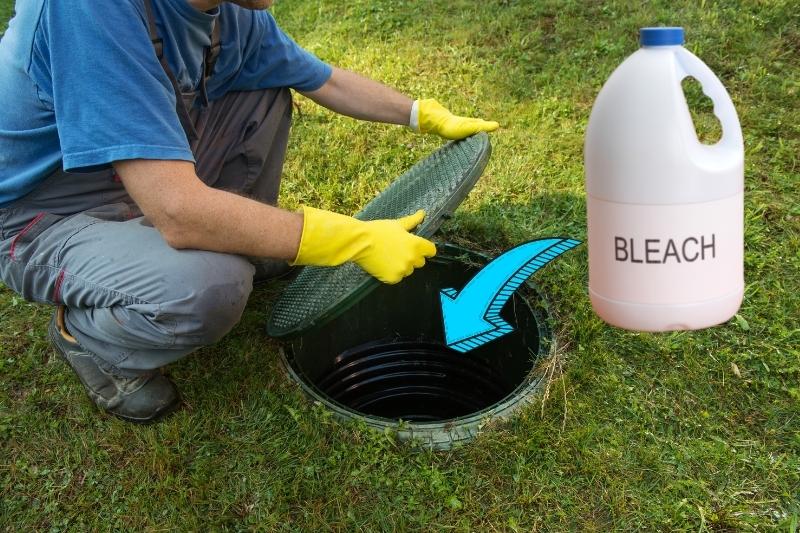
When used correctly and in moderation, bleach can be used with a septic tank. However, it should not be used regularly. Bleach is designed to kill off bacteria, and a septic tank relies on bacteria to function properly.
If you use a small amount of regular household bleach to clean a toilet, this is unlikely to cause a problem. However, extra-strong bleach should be avoided unless heavily diluted. As a rule, try to find a gentler solution if you need to use a lot of any given chemical!
Ammonia
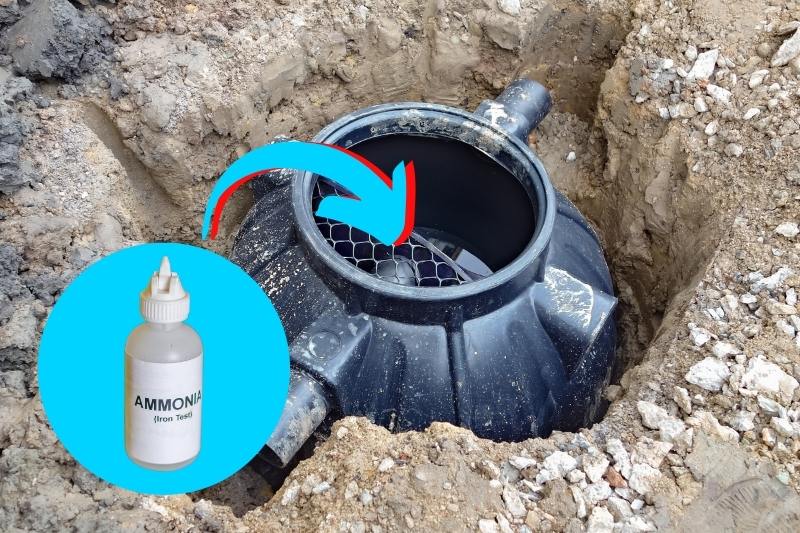
Much like bleach, cleaning products that contain ammonia can be used with a septic tank, if they are only used occasionally and in moderation. If the cleaning product has a high percentage of ammonia, avoid using it all together.
Multi-Purpose Cleaners
Most household multi-purpose cleaners are mild, and so generally safe to use if you have a septic tank. Try to find multi-purpose cleaners that are phosphate-free, as these products usually do not contain any harsh chemicals that can kill the bacteria in the tank.
Water-Based Chemicals
Water-based chemicals are usually the safest to use with a septic tank as the water will have diluted any potentially harmful chemicals. To find out if a chemical is water based, check the ingredients list; water should be the first ingredient in the list.
Homemade Cleaning Products

If you are trying to reduce the amount of chemicals in your home or are just unsure about what is safe to use, there are several homemade cleaning solutions that you can opt for instead.
The kitchen cupboard wonders that are distilled white vinegar and bicarbonate of soda make a great homemade, gentle cleaning product that is ideal for a variety of chores.
Instead of using a chemical drain cleaner, you can unblock a drain without damaging the septic tank with bicarbonate of soda and white vinegar.
Simply pour half a cup of bicarbonate of soda down the drain, followed by a cup of distilled white vinegar. Leave the mixture to foam for a few minutes, then pour boiling water down the drain to flush away the mixture.
To clean your bath, shower, or sink without using chemicals, you can use just bicarbonate of soda and warm water. Simply sprinkle bicarbonate of soda on all the surfaces and spritz with warm water.
The mixture should begin to bubble, and after a couple of minutes, start scrubbing the surfaces. If the stains are stubborn, replace the water with distilled white vinegar. Rinse the surfaces with warm water to finish.
In the same way, you can also clean a toilet bowl with bicarbonate of soda and vinegar.
Sprinkle the toilet with a cup of bicarbonate of soda, and let it sit for around thirty minutes. Spray the surface with white vinegar, and scrub with a toilet brush. Flush the toilet to reveal a shiny, chemical free finish.

Lover of coffee, painting, and all things cute and fluffy. I’m always on the lookout for easier, more gentle ways to tackle awful household chores.
